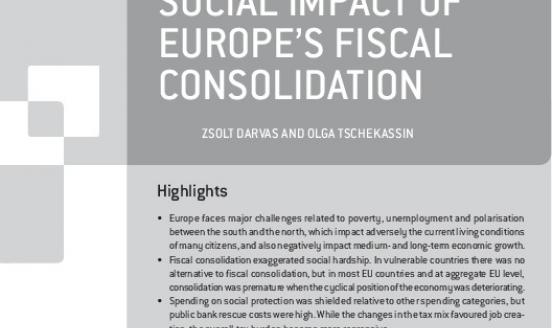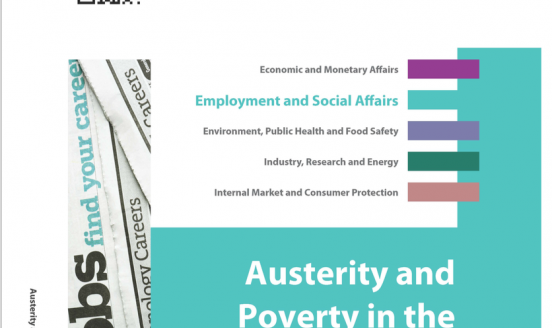Interactive map: Debt & inflation
Yesterday’s inflation flash estimates published by Eurostat show a Euro Area (EA) annual inflation of 0.5 percent, down from 0.7 percent in
See also Policy Contribution 'Addressing weak inflation: The European Central Bank's shopping list', comment 'Easier monetary policy should be no worry to Germany' and comment 'Negative ECB deposit rate: But what next?'.
Yesterday’s inflation flash estimates published by Eurostat show a Euro Area (EA) annual inflation (HICP) of 0.5 percent, down from 0.7 percent in the previous month. These low levels of inflation are counteracting efforts of deleveraging. In regard of the high debt levels in some EU countries an inflation level closer to ECB’s inflation target of 2% would be desirable. Price adjustments in the periphery need to be accompanied with higher inflation in the core of Europe to make rebalancing feasible. As you can see in the interactive map below, all EU countries are well below the 2% target.
[chart-content]
Source: Eurostat
Note: All data 2012 apart from public debt which is defined as consolidated general government gross debt at nominal value, outstanding at the end of the year 2013. Harmonized Indices of Consumer Prices (HICP) data is an annual rate which measures the price change between April 2014 and the same month of the previous year, except for UK for which data is from March 2014. HICP is a measure of inflation which captures price changes in consumer goods and services and is harmonized between EU countries.
The picture of debt distribution across countries looks very different depending on the sector in consideration. A higher public debt to GDP ratio binds more resources for debt services that is not available for other potentially more productive expenditures. Public debt exceeds nominal GDP in 2013 in 6 Euro Area (EA) countries which include not only as expected Greece, Portugal, Ireland, Cyprus and Italy but since last year also Belgium. Especially alarming is the level in Italy which ranks second right after Greece. While public debt is concentrated in the south and west of Europe, high levels of household debt are to be found more often in northern countries such as Denmark, Netherlands and Ireland.


